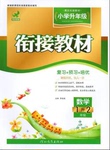题目内容
【题目】阅读短文,完成下列问题。
B
Although travelers can try dishes from around China and the globe in well-known food cities like Beijing and Shanghai, it is outside these major metropolises where a world of exciting Chinese cuisine(中国菜) awaits the true foodie(美食家). With this in mind and after three years of living in China and writing about Chinese food, I started a six-month journey with my husband and two daughters.
Here are four of the eight most amazing Chinese food cities I've come across so far. The list is in no particular order.
1 Chengdu, Sichuan Province
Crowned as Asia's first UNESCO City of Gastronomy(美食学) in 2010, Chengdu is best-known for its fiery hot pot and spicy dishes, which are characterized by the use of Sichuan pepper and are usually layered with salty, sour and sweet flavors. There are also dishes that aren't spicy at all, such as beer-braised duck.
Hot pot is as ubiquitous in the city as the smell of chili. At Zigong Delicious Hotpot, the house specialty(招牌菜) tiaoshui wa is a cauldron(大锅) of fiery chili(辣椒) to which vegetables, noodles or other meats can be added.
For a real taste of Sichuan's signature(招牌)pepper, hua jiao, spend a morning at the Chengdu Spice Market where the locals sell and buy it by the sack.
2 Lanzhou, Gansu Province
Synonymous in the minds of food-lovers with hand-pulled beef noodles, Lanzhou also has one of the liveliest street food night markets in China.
Just west of the city center, the buzzing Zhengning Road bazaar(集市)houses more than 100 street food stalls. Available is a broad selection of hot and cold dishes with emphasis on local Hui cuisine.
No trip to Lanzhou is complete without feasting on noodles at Wumule Penhui, the 2012 winners of Lanzhou's annual pulled noodle competition. The halal restaurant makes noodles spicy enough to satisfy even the most hardened heat-seekers.
3 Guangzhou, Guangdong Province
The birthplace of Cantonese food, Guangzhou is thought by many as the best place to eat in China. The city of 12 million has a passionate food culture, with equal excitement reserved for the opening of a hole-in-the-wall congee joint(粥店)and a high-end restaurant.
The local cuisine is characterized by fresh clean flavors(口味), seafood, barbecued meats and the wonderful tradition of yum cha, which is tea drinking accompanied by dumplings and small dishes.
Congee is the way locals love to start their day, and one of the most popular vendors is Ru Xuan Sha Guo Zhou. Here, one can get a bowl of signature seafood congee any hour of the day.
Roast meats are Bing Sheng's most popular order—their roast goose is marinated(腌制)with five-spice, boiled, air-dried, then roasted by a flame oven to give a crisp skin.
For something more home style and removed from the madness of downtown, head to Ji Cun for steamed chicken and simple farmer-style dishes.
4 Shaoxing, Zhejiang Province
This ancient canal city is home to huangjiu, an amber-colored rice wine that's important in Chinese cooking.
Open since 1894, the dining chain is known by almost every Chinese for its appearance in early 20th century novels by Chinese literati Lu Xun.
Xianheng's delicacies(佳肴)include crispy-skinned chicken, smoked red dates in rice wine, beans flavored with fennel(茴香), and crispy bream in rice wine.
Fried fermented(发酵的)tofu is also a local specialty, which is available all over town at small street stalls including one just outside Xianheng.
(1)The writer's purpose of the passage is to ____________.
A.share her story and impression on Chinese cuisines
B.tell readers how to comment on amazing Chinese food cities
C.talk the readers into enjoying the signature food such as hand-pulled noodles
D.express her preference for fiery hot pot and spicy dishes in Chengdu.
(2)The underlined word “ubiquitous” can be replaced by ____________.
A.charming and attractive
B.smelly and disgusting
C.common and popular
D.fiery and spicy
(3)If a fresh clean flavor is to a foodie's taste, which couple of cities is he likely to make a trip to?
A.Chengdu, Lanzhou
B.Lanzhou, Guangzhou
C.Guangzhou, Shaoxing
D.Shaoxing, Chengdu
(4)According to the writer, what message of food culture is brought out in the passage?
A.Cantonese food is characterized by a sea of marinated dishes.
B.Huangjiu is widely believed to be essential in Chinese cooking.
C.Pepper, chili and huajiao play an important role in all Sichuan dishes.
D.Hand-pulled beef noodle is a speciality in local Hui cuisine.
【答案】
(1)A
(2)C
(3)C
(4)B
【解析】本文主要介绍了中国的各大菜系及其代表城市。
(1)A细节理解题。根据文章第一段第二句it is outside these major metropolises where a world of exciting Chinese cuisine(中国菜) awaits the true foodie(美食家). With this in mind and after three years of living in China and writing about Chinese food, I started a six-month journey with my husband and two daughters.可知,在中国的北京上海这类大城市之外,一个令人兴奋的中国菜的世界在等着真正的美食家们。有了这种想法,在中国住了三年,写了三年关于中国的事物,作者和丈夫,两个女儿开始了一次六个月的旅行,故选A。与读者分享她的故事和她对中国菜的印象。
(2)C词义猜测题。根据文章第四段第二句At Zigong Delicious Hotpot, the house specialty(招牌菜) tiaoshui wa is a cauldron(大锅) of fiery chili(辣椒) to which vegetables, noodles or other meats can be added.可知没在自贡美味火锅,招牌菜是一大锅辣椒,里面可以加蔬菜,面条或其他肉类。由此可知,添加的东西都是很普通但美味的,为大家所喜欢。因此选C。
(3)C细节理解题。分局第十段第一句The local cuisine is characterized by fresh clean flavors(口味)可知广州的食物是因口味清新为特点的;根据第十四段第二句an amber-colored rice wine that’s important in Chinese cooking.可是绍兴则是以琥珀色的米酒而出名,米酒是口味清淡的。可知C说法正确。
(4)C 细节理解题。根据第十段第一句The local cuisine is characterized by fresh clean flavors(口味),可知广州的食物是因口味清新为特点的;根据第十四段第二句an amber-colored rice wine that's important in Chinese cooking.可知绍兴则是以琥珀色的米酒而出名,米酒是口味清淡的。可知C项说法正确。
(5)B 细节理解题。根据文章倒数第三段Open since 1894, the dining chain is known by almost every Chinese for its appearance in early 20th century novels by Chinese literati Lu Xun. 可知,在20世纪初期才因为鲁迅的作品走进人们视线的黄酒,在饮食链条中早已被使用,竟然是开始于1894年,所以B正确,黄酒在中国的烹饪中已经被广泛使用,被认为是最基本的调味品。

 鹰派教辅衔接教材河北教育出版社系列答案
鹰派教辅衔接教材河北教育出版社系列答案 初中暑期衔接系列答案
初中暑期衔接系列答案